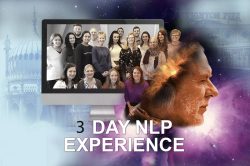Reflection on Cognitive & Conceptual Development by Jerome Whitney
In order to adequately support holistic education it is essential to apply educational practices, standards, evaluative techniques, and learning approaches that are relevant and organic to the theory, principles, and practice of balanced learning. The following is as an outline of considerations essential to such an endeavour.
1) Objectives
The currently accepted fad adhered to by educationalists in regard to objectives was lifted from the work of an American business management guru who made the point that: ‘An objective is not an objective unless it can be measured with one of the five senses’.
The above materialist definition of an objective may well be practical for training students in linear quantative learning skills but where is there any real support for qualatative skills?
2) Contemporary education learning level criteria are based firmly on left brain cognitive stages. These were developed back in 1956 by a team of academics lead by Benjamin Bloom and today are known as Bloom’s Taxonomy.
2.1) Bloom’s team divided learning into three domains:
a) Cognitive: knowledge-based domain with six levels
b) Affective: attitudinal-based domain with five levels
c) Psychomotor: skills-based domain with six levels
2.2) Bloom’s Cognitive Skills
6 Evaluations
5 Synthesis
4 Analysis
3 Application
2 Comprehension
1 Knowledge
(shown as an ascending integrative scale with most complex at the top)
It is upon a modified version of this hierarchy of learning stages that virtually all British and American educational institutions base their marking grids. It creates a “flatland” (See Kinder, The Theory of Everything} which rewards only left brain intellection and essentially ignores the right brain associative learning which is equally required for balanced wholesome development.
The result is that the Bloom cognitive model is one of the ‘elephants in the room’ of a learning model which parents actively involved in home education have rejected with their ‘feet’.
What is needed is a learning process that focuses not only on the externalized left brain concepts of the Bloom model but also includes the internalized concepts of the right brain associative model.
3) The lateral associative skills domain consists of:
6 Wisdom
5 Understanding
4 Knowing
3 Sharing
2 Appreciating
1 Perceiving
4) Explorations in Conceptual Thinking is a ‘gymnasium’ set up to activate conceptual skills by providing participants with a range of active exercises in listening , reflection, sharing, and stretching of their associative skills in order to stimulate balance in mental function.
Many thanks to Jerome Whitney for these two articles on Education – Right and Left Brain Thinking.




